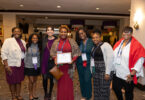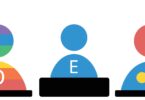Editor’s note: In celebration of Black History Month in February, PRSA invited prominent public relations professionals to offer their views and ideas for achieving greater racial and ethnic diversity in the profession as well as what Black History Month means to them. A compilation of previous PRSA Black History Month blog posts can be found here.
When key leaders speak about diversity in the profession, we often hear the word “pipeline.” A pipeline is defined as a channel that supplies good and information, and when applied to the diversity concept, it refers to the development and processing of individuals into the organization or profession, moving them from one stage to another.
Most of the focus on these efforts have focused on the people in the pipeline. How do we access these students and professionals? Where can we tap them? How early do we need to grab their interests? Many organizations have created programs addressing these areas. For example, firms have started diversity and inclusion councils, and others have had great success with career fairs aimed at historically Black colleges and minority-serving institutions.
Those efforts are quality starts. However, if we continue with the pipeline metaphor and thinking of the pipeline as a linear lockstep process, we must be careful that our discussions aren’t limited to the inputs. We need to be concerned about the structure of the channel and the stages of the process. Some things to consider in the pipeline metaphor are:
- Social systems: What trends are influencing educational patterns? How early should we start getting students to think about public relations as a career aspiration? What are some stereotypes about the profession that we can change through contact with the students?
- Organizational entry: Are no-pay internships the foot in the door for the organization? Are job seekers phased out in favor of job catchers who are referred through friends, family, and other contacts? How are candidates self-selecting out of the process? Could they see something about the firm that we do not see?
- Culture: Are the words we use to define the corporate culture just words, or are these things put into practice? How do we show that we are inclusive? Are these efforts shallow and superficial? Are these efforts championed and touted by the chief leaders at each level within the organization?
- Leadership: Is the leadership paying attention to those who are being groomed and primed for leadership? Are there efforts to break up the homosocial reproduction that occurs in the higher echelons of organizational leadership?
- Mentorship: re there mentoring initiatives? Are those initiatives informal or formal? Is the organization implementing sponsorship, which I discussed in this blog? Sponsorship is:
- A specific type of mentoring that is rarely talked about is sponsorship. Sponsorship is a deeper, intense, and targeted cycle of grooming and promotion. The mentor (the senior level person) is valuable to someone’s career progress because he or she provides upward mobility, visibility, and support to their protégés as well as fights to get someone promoted.
The pipeline metaphor has been in use for decades, but a more apt word that we should use is obstacle course. Ragins and Sundstrom (1989) outlined a clear explication about why the phases in the pipeline can be perceived as a series of structural “impediments and barriers” that hinder smooth transitions. For these smooth transactions to take place, we have to be concerned with the places where the pipeline leaks and what the pipeline is made of. Regardless of how we see and define the pathway from grade school to practicing public relations practitioner, we should work toward making sure the path and pipeline are solid structures that work for the good of those in and benefitting from the pipeline. The PRSA Diversity Committee is willing to work with organizations and chapters on pipeline efforts.
Natalie T. J. Tindall is an assistant professor at Georgia State University, where she teaches courses in strategic communication and public relations. She is a fiction writer, knitter, community volunteer, and occasional half-marathoner between her academic writing, teaching, and service. She can be contacted via Twitter (@dr_tindall) or email (ntindall@gsu.edu).







I think this is a great discussion with many great points and questions, but I will specifically address pipelining in minority institutions. As a senior Public relations major, I find that many of these pipeline programs tend to focus, as discussed above, on minority serving institutions or HBCU’s (historically black colleges and universities). Many HBCU’s are unable to offer sufficient financial support to their students because of the great need amongst the communities they serve. Thus, when recruiters only target such schools, they are targeting the middle and upper-class black or hispanic communities who can afford these schools and not the black students attending a PWI (predominantly white institution). This method may elicit ethnic diversity, but does not necessarily produce socioeconomic diversity and those of us who have benefited from a more diverse environment, and more financial aid from PWI’s, are left to cope with great resumes and companies who often overlook us.
[…] academic literature, mentoring is a broad concept that includes sponsorship. As Tindall noted in a previous blog , “sponsorship is a deeper, intense, and targeted cycle of grooming and promotion. The mentor […]
[…] down. A final notice that the days of talk are limited. A strident challenge that calls out that the pipeline the industry leaders continually say is leaky has a flawed […]